Tokyo—a city where ancient history meets cutting-edge technology and neon-lit streets. Whether you’re visiting for the first time or returning to uncover new gems, this city never stops evolving. In 2024, there are even more reasons to explore Tokyo, as new attractions, revitalized districts, and cultural experiences await. Here are the Top 20 must-visit places that will make your trip unforgettable.
1. Shibuya Sky
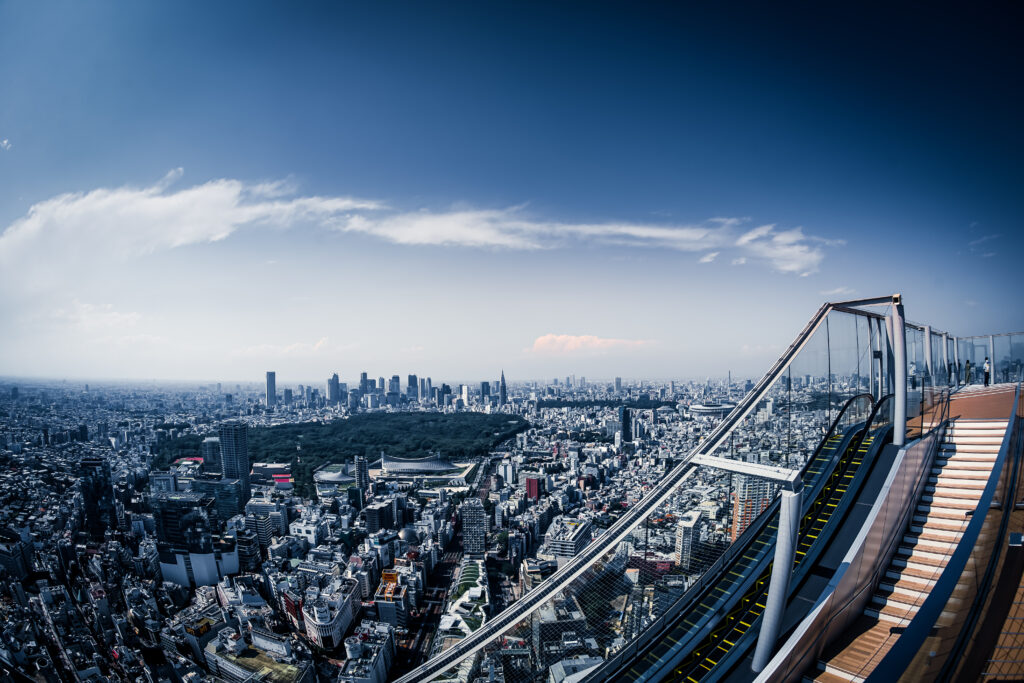
Located atop Shibuya Scramble Square, Shibuya Sky offers one of the best panoramic views in Tokyo. The open-air rooftop observation deck is 229 meters high and provides breathtaking 360-degree views of the entire city, including iconic landmarks like Tokyo Tower, Tokyo Skytree, and even Mount Fuji on clear days. The area is thoughtfully designed with seating areas, sunken spaces, and even hammocks, allowing you to relax while taking in the bustling cityscape below. The deck’s atmosphere transforms in the evening, offering stunning nighttime views of the city lights, which stretch as far as the eye can see. In addition to the observation deck, the building itself features a shopping complex, restaurants, and cafes, making it a complete day-out destination. A digital art installation on the lower floors, along with a rooftop bar, adds to the immersive experience.
2. Tokyo Skytree
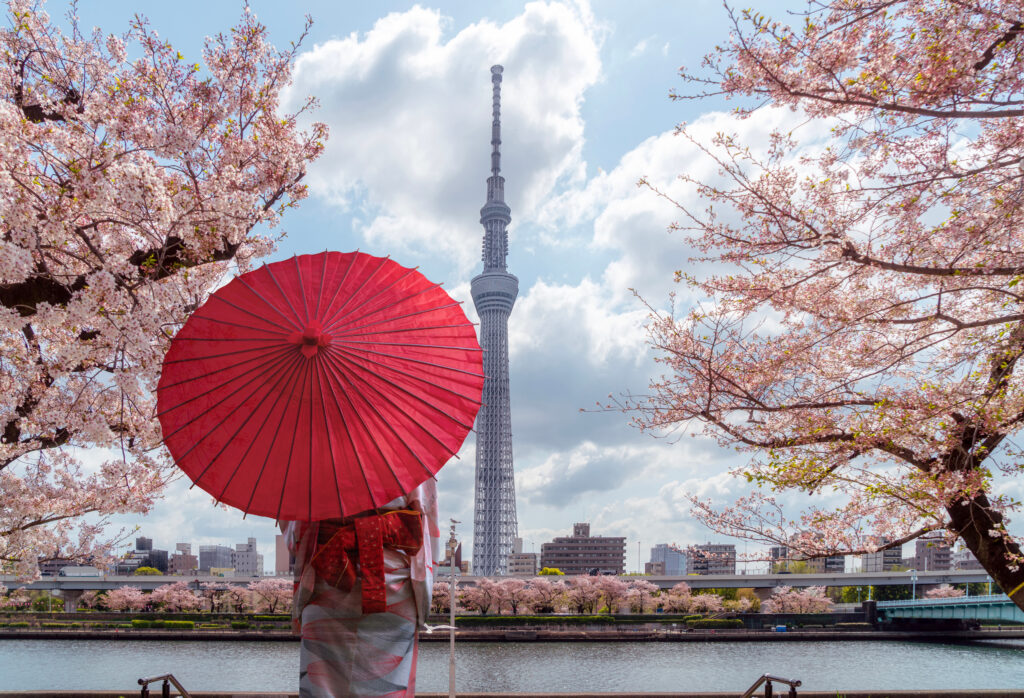
Standing at an awe-inspiring 634 meters, Tokyo Skytree is the tallest structure in Japan and offers unparalleled views of Tokyo’s sprawling metropolis. The two observation decks—Tembo Deck at 350 meters and Tembo Galleria at 450 meters—are engineering marvels, providing a full 360-degree view of the city. The Galleria features a spiraling glass walkway that gives visitors the illusion of floating above the city. The clear glass floors on the Tembo Deck add an exhilarating thrill as you gaze straight down to the streets below. On a clear day, the view stretches far beyond the city to Mount Fuji, offering a unique perspective on Tokyo’s blend of nature and urban sprawl. At the base of Skytree, Tokyo Solamachi Mall offers shopping, dining, and entertainment, including the Sumida Aquarium and a planetarium. Skytree’s illumination at night alternates between two colors: Iki, a vibrant blue, and Miyabi, an elegant purple, which represent the spirit of Edo Tokyo and its sophisticated charm.
3. Senso-ji Temple, Asakusa
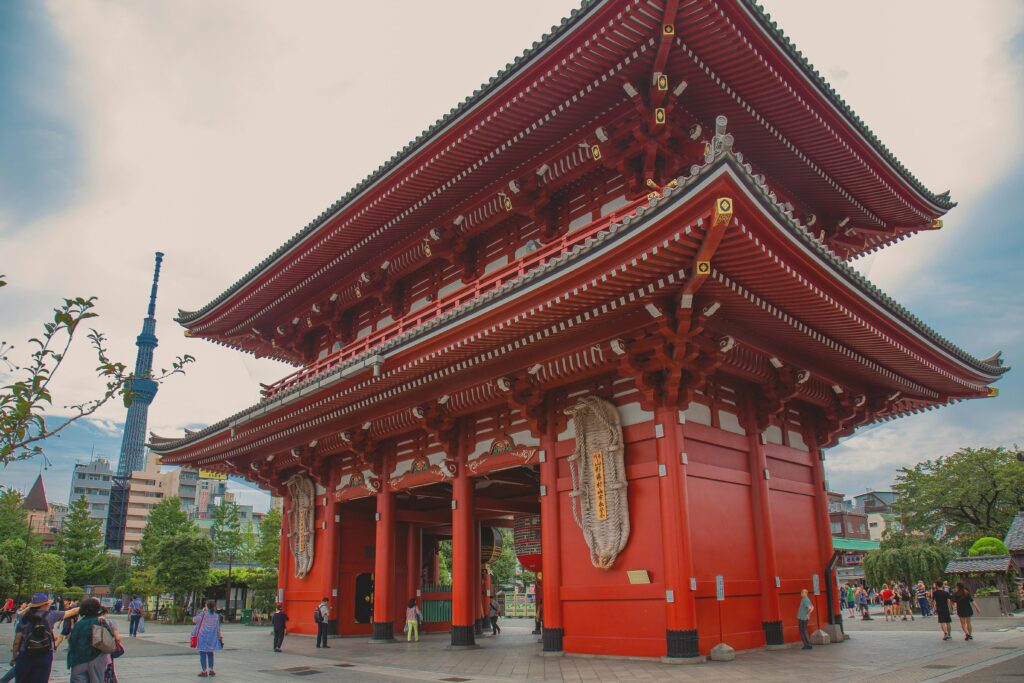
Located in the heart of Asakusa, Senso-ji Temple is Tokyo’s oldest and most visited temple, having stood since 645 AD. The temple is dedicated to Kannon, the Goddess of Mercy, and draws millions of visitors each year who come to offer prayers, partake in traditional rituals, or simply admire its historical grandeur. The approach to the temple, via the iconic Kaminarimon Gate with its massive red lantern, sets the tone for the cultural experience that awaits. Beyond the gate, visitors walk through the lively Nakamise-dori, a vibrant shopping street that’s been operating for centuries, selling traditional snacks, souvenirs, and local crafts. The main hall of Senso-ji is a peaceful retreat, where you can light incense, make wishes, and even try your luck with omikuji (fortune slips). Behind the temple is a beautiful five-story pagoda, and the nearby Asakusa Shrine provides a quieter, more intimate experience. Senso-ji is particularly magical during the many festivals held throughout the year, including the Asakusa Samba Carnival and the Sanja Matsuri.
4. Harajuku and Takeshita Street
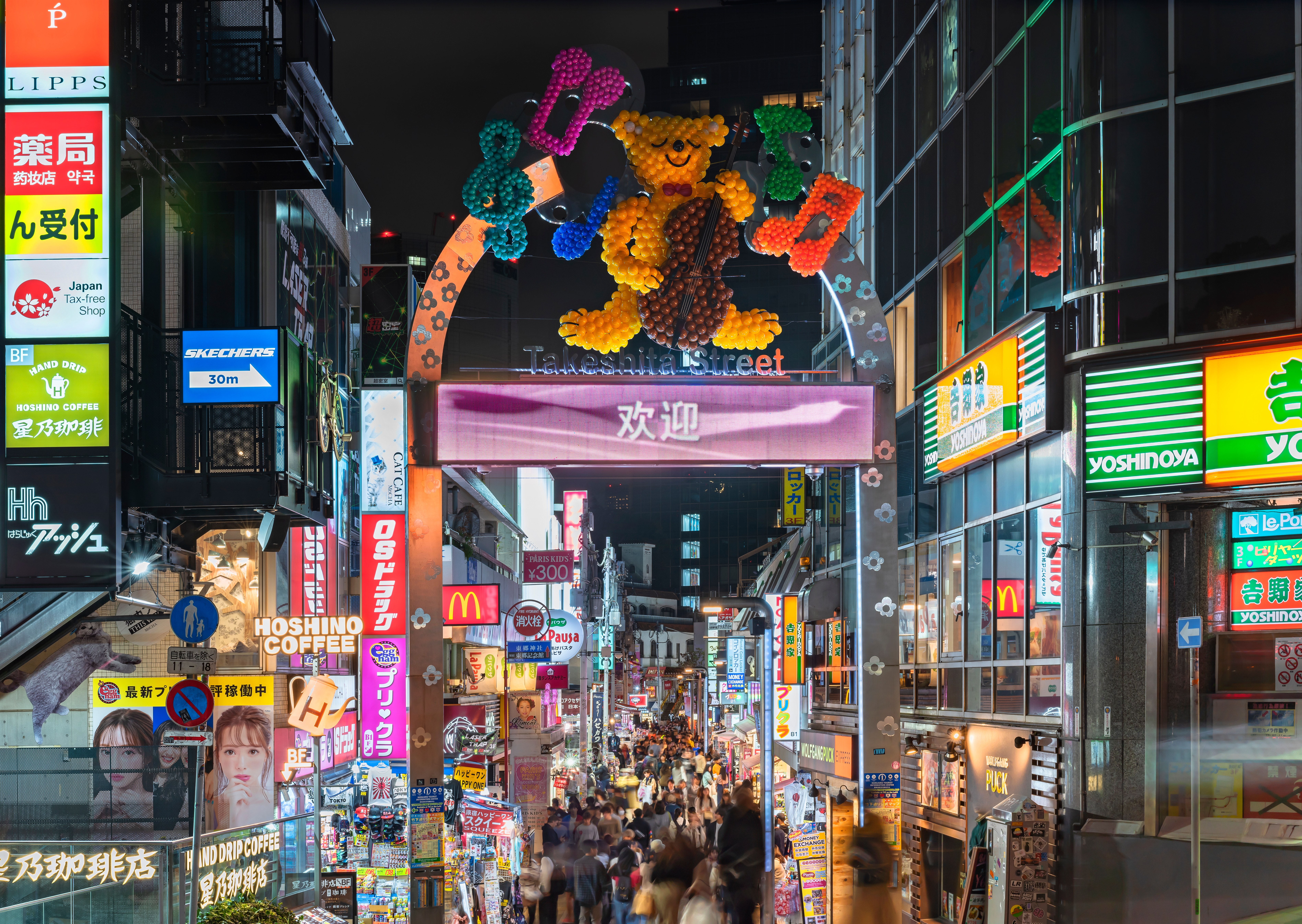
The lively and colorful Takeshita Street in Harajuku is the beating heart of Tokyo’s youth and fashion culture. This bustling pedestrian-only street is lined with quirky boutiques, trendy shops, and vibrant cafes, making it the go-to destination for anyone looking to immerse themselves in kawaii (cute) culture and street fashion. Here, you’ll find everything from cosplay stores to thrift shops selling eclectic vintage pieces, along with accessories that reflect the bold and creative style of Harajuku. The area is also famous for its over-the-top street food, such as rainbow-colored cotton candy, bubble tea, and the iconic Harajuku crepes, which come loaded with whipped cream, fruit, and chocolate. Harajuku is where many of Japan’s most influential fashion trends are born, and it’s not uncommon to see young people showing off experimental and avant-garde outfits as they stroll down the street. While Takeshita Street is the epicenter of this subculture, nearby Omotesando Avenue offers a more upscale shopping experience, blending the best of both worlds.
5. Tokyo Tower
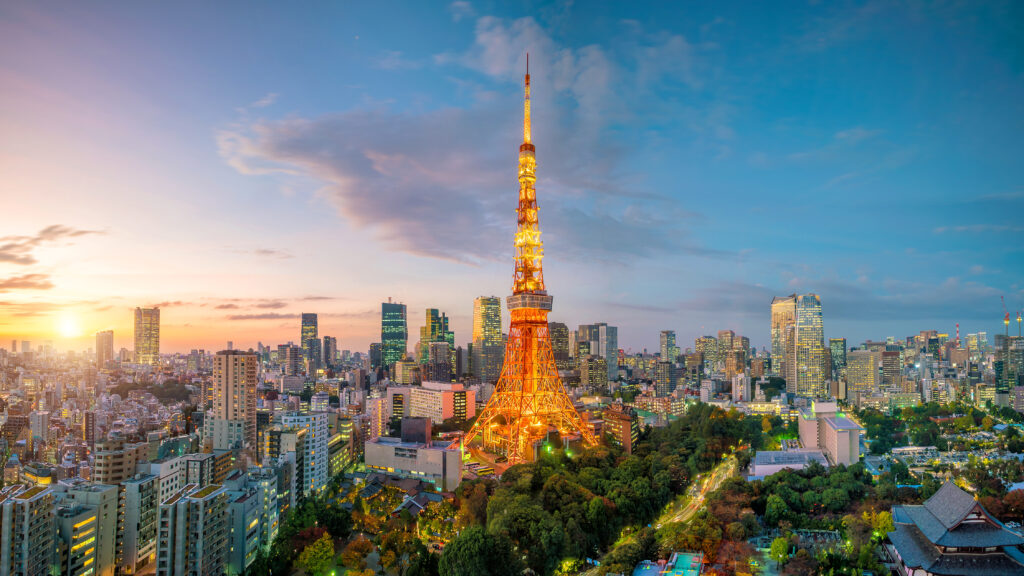
Modeled after the Eiffel Tower but painted in Japan’s signature red and white, Tokyo Tower has been an iconic part of Tokyo’s skyline since its completion in 1958. Standing at 333 meters, it offers two observation decks that provide stunning views of the city. The Main Deck at 150 meters is perfect for day and night views, while the Top Deck at 250 meters offers a more intimate and luxurious experience, complete with a glass-covered elevator ride that adds a futuristic touch. Tokyo Tower is a beloved symbol of Japan’s post-war recovery and modernization, and it remains a must-see destination for both locals and tourists. The tower is also home to a variety of attractions, including the Tokyo Tower Wax Museum, the One Piece Tower theme park for anime fans, and Foot Town, a shopping complex at the base of the tower with souvenir shops and restaurants. The tower’s nightly illumination changes seasonally, making it a dazzling spectacle against Tokyo’s night sky.
6. Odaiba
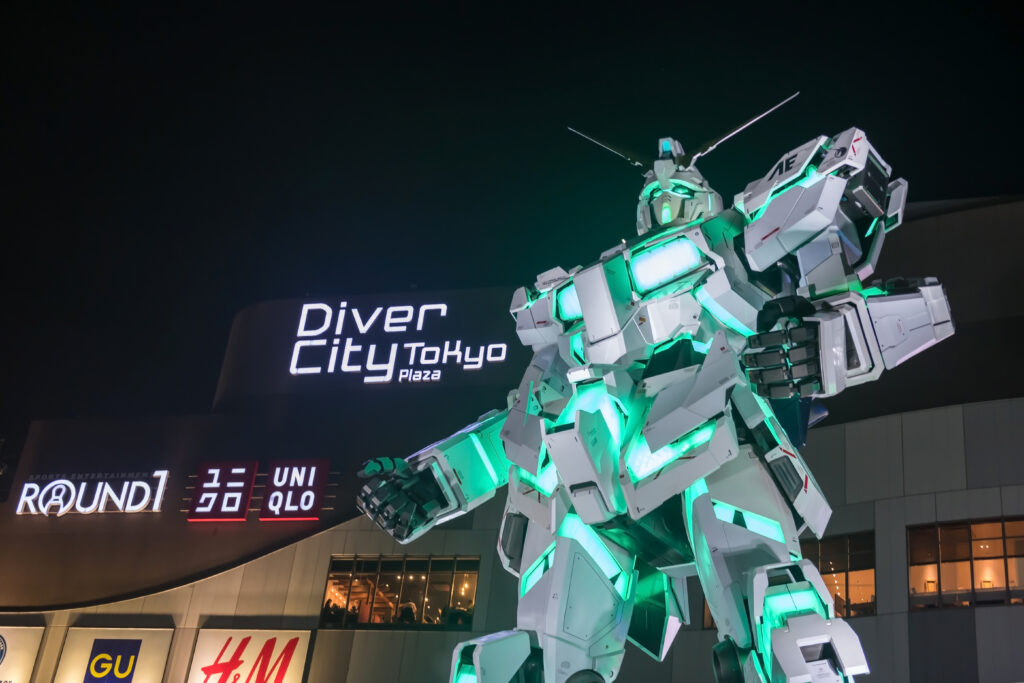
Odaiba, a futuristic man-made island in Tokyo Bay, is home to some of the city’s most cutting-edge attractions. From the life-sized 19.7-meter-tall Gundam Unicorn Statue at DiverCity Tokyo Plaza to the immersive teamLab Borderless digital art museum, Odaiba offers a mix of entertainment, shopping, and scenic views. The island also features stunning architecture, such as the Fuji TV Building and the iconic Rainbow Bridge, which connects Odaiba to the mainland. In addition to the numerous malls and entertainment centers, Odaiba’s Oedo Onsen Monogatari is a fantastic spot to experience a traditional Japanese hot spring in a modern setting. Families will enjoy attractions like Legoland Discovery Center and the Miraikan (National Museum of Emerging Science and Innovation), where you can interact with robots and learn about future technologies.
Pro Tip: Stay until sunset to catch stunning views of the Rainbow Bridge and Tokyo’s skyline. The night view is especially magical from Odaiba Seaside Park.
7. Meiji Shrine
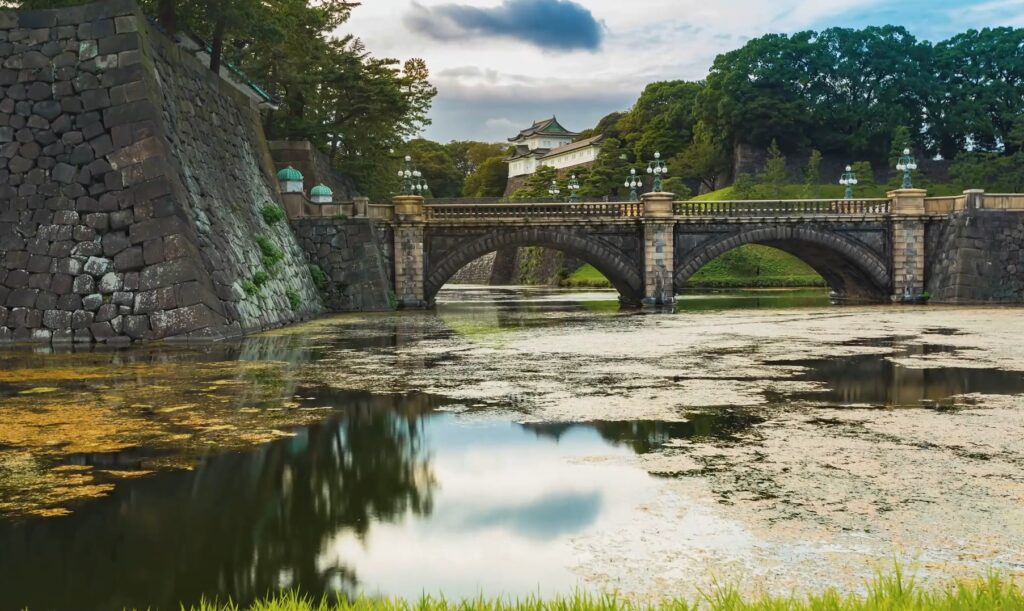
Tucked away in a lush, sprawling forest right next to the bustling Harajuku district, Meiji Shrine is one of the most significant Shinto shrines in Japan. Dedicated to Emperor Meiji and Empress Shoken, this serene oasis is surrounded by over 120,000 trees, creating a peaceful escape from the urban energy of Tokyo. Visitors enter the shrine through a massive torii gate, which marks the transition from the profane to the sacred. As you walk along the gravel paths, you’ll find barrels of sake and wine donated to the shrine as offerings. The shrine itself is an elegant wooden structure, where visitors can offer prayers, write wishes on ema plaques, and participate in traditional Shinto rituals. On weekends, it’s common to witness traditional Japanese weddings being held here, adding to the cultural and spiritual atmosphere of the shrine. The annual Hatsumode event, where millions come to offer their first prayers of the year, is a particularly special time to visit.
8. Roppongi Hills and Mori Art Museum
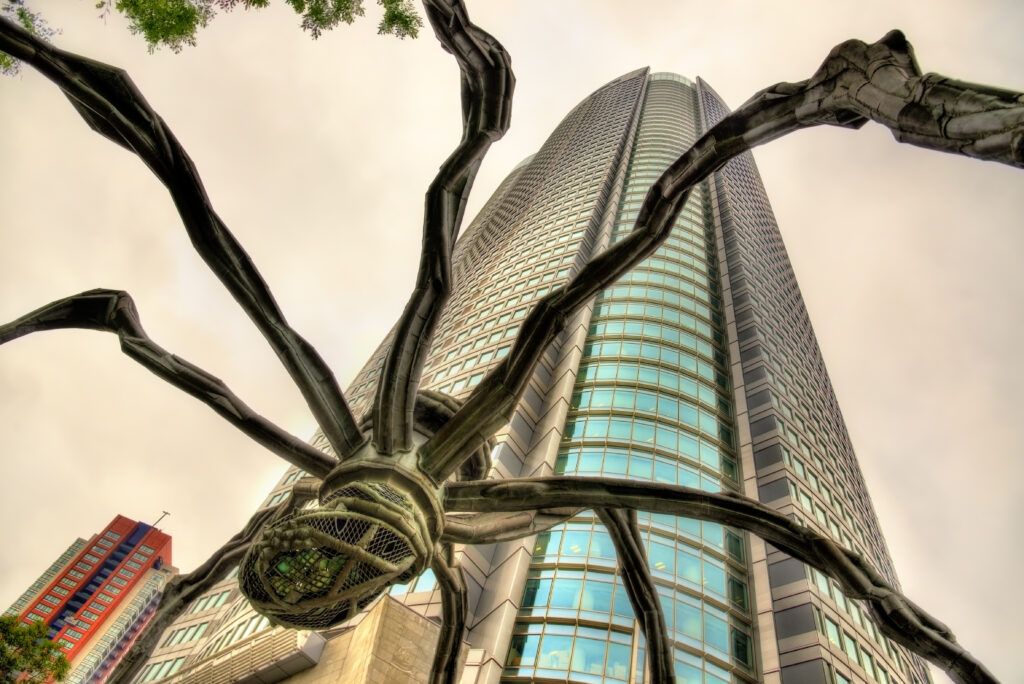
Roppongi Hills is a modern and upscale development that combines luxury living, high-end shopping, fine dining, and art, making it one of Tokyo’s trendiest areas. The main attraction here is the Mori Art Museum, located on the 53rd floor of the Mori Tower. The museum showcases contemporary art from both Japanese and international artists, with rotating exhibits that keep the space dynamic and fresh. After exploring the museum, visitors can step out onto the Tokyo City View observation deck, offering some of the best views of Tokyo’s skyline, including close-up views of Tokyo Tower and distant views of Tokyo Skytree. Roppongi Hills is also home to an outdoor cinema, a lush Japanese garden, and a variety of gourmet restaurants, making it a one-stop destination for culture, relaxation, and entertainment. The surrounding Roppongi district is known for its vibrant nightlife, with clubs, bars, and late-night eateries, making it popular among both locals and international visitors.
9. Shinjuku Gyoen National Garden
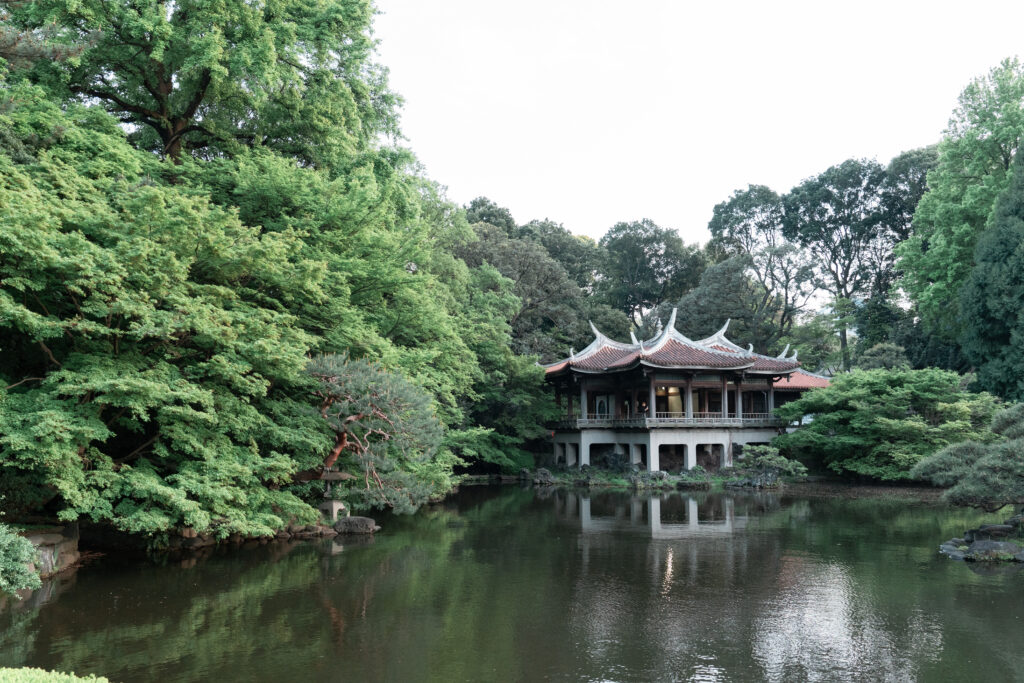
One of Tokyo’s largest and most beautiful parks, Shinjuku Gyoen National Garden offers a tranquil escape from the urban hustle. Originally built as an imperial garden, Shinjuku Gyoen blends three different garden styles: traditional Japanese, French formal, and English landscape, creating a diverse and visually stunning experience for visitors. The park is especially famous for its seasonal beauty, with cherry blossoms in spring and vibrant autumn foliage making it a popular spot for photographers and nature lovers. The garden’s Japanese Traditional Garden features serene ponds, bridges, and teahouses, where you can enjoy a quiet moment while surrounded by nature. The Shinjuku Gate serves as the main entrance, and from there, you can easily access all areas of the park. It’s a favorite spot for families, couples, and anyone looking to relax away from the city’s fast pace.
10. Ginza

Known as one of the world’s premier shopping districts, Ginza is a dazzling showcase of high-end fashion, luxury brands, and modern architecture. Walking down Chuo-dori, Ginza’s main shopping street, is an experience in itself, especially on weekends when the street is closed to vehicles and transformed into a pedestrian paradise. Flagship stores for international brands like Chanel, Louis Vuitton, and Gucci sit alongside traditional Japanese department stores like Mitsukoshi and Wako, blending modern luxury with historic elegance. Ginza is also home to some of Tokyo’s finest restaurants, including many Michelin-starred establishments serving exquisite Japanese and international cuisine. For art lovers, the district is dotted with galleries showcasing both contemporary and traditional works. A visit to Ginza Six, a high-end shopping complex with a rooftop garden, provides a peaceful escape with views of Tokyo’s skyline, adding a touch of tranquility to your shopping spree.
11. Akihabara
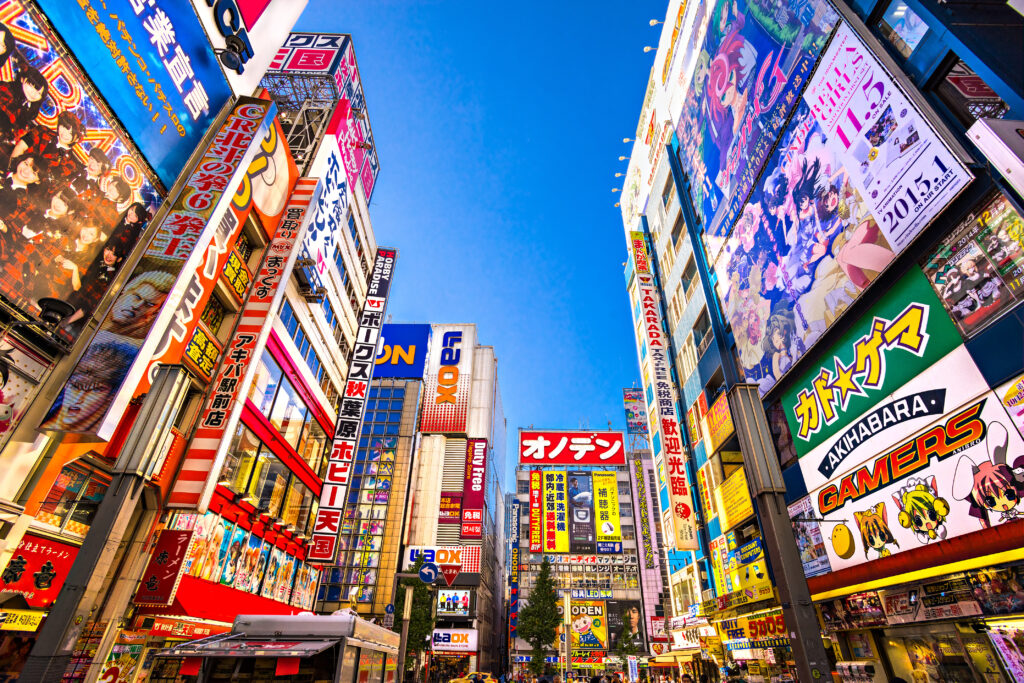
Akihabara, also known as Electric Town, is a neon-lit paradise for gamers, anime fans, and tech enthusiasts. This district is the heart of Tokyo’s otaku (geek) culture, with multi-story stores dedicated to manga, anime, video games, and electronic gadgets. Whether you’re a casual fan or a hardcore collector, you’ll find everything from vintage gaming consoles to the latest high-tech gadgets. One of the highlights is Super Potato, a retro gaming shop filled with rare and classic games. If you’re an anime fan, the area is brimming with shops selling figurines, posters, and cosplay costumes. Maid Cafes, where waitresses dressed as maids serve guests in a fun and playful atmosphere, offer a quintessentially Akihabara experience. For a deeper dive into Japanese pop culture, visit Akihabara Radio Kaikan, a multi-level complex packed with anime, idol merchandise, and electronics. The arcades here are also a must-visit, with floors dedicated to crane games, rhythm games, and virtual reality experiences.
12. Tokyo Dome City
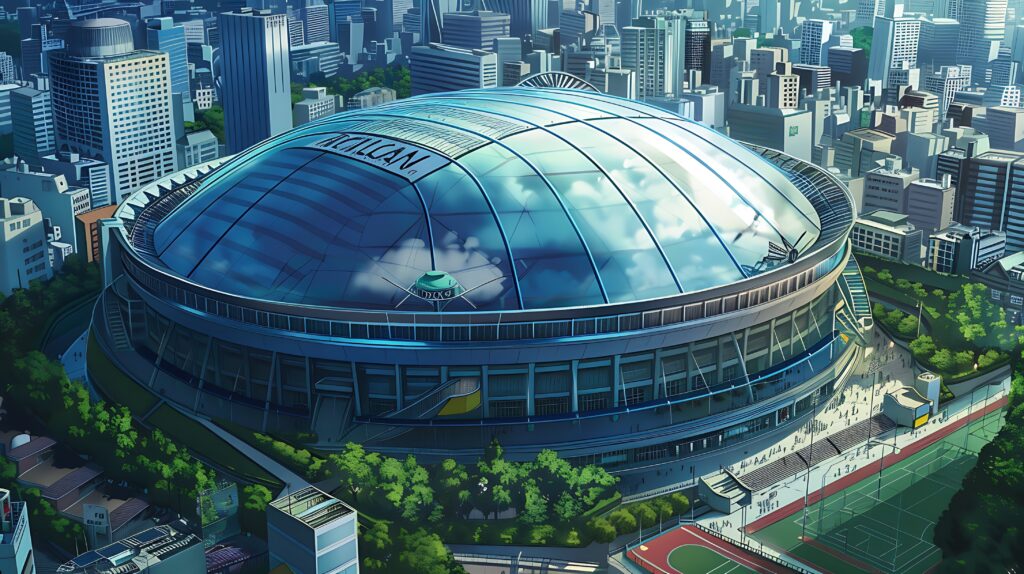
Tokyo Dome City is an entertainment complex offering something for everyone, from thrilling rides to sports events and relaxation. The centerpiece is the Tokyo Dome, a massive indoor stadium that hosts baseball games, concerts, and international events. Surrounding the dome is a lively amusement park featuring attractions such as the Thunder Dolphin, a roller coaster that loops through the city skyline and cuts through a building, providing a heart-pounding experience. For those looking to unwind, the LaQua spa complex offers hot spring baths, massages, and beauty treatments. In addition to the rides and relaxation, Tokyo Dome City also features a shopping mall, restaurants, and even a bowling alley, making it a great spot for families and thrill-seekers alike. The Big O, a large Ferris wheel, offers stunning views of Tokyo, especially at night when the city lights up.
13. Yoyogi Park

Located next to Meiji Shrine, Yoyogi Park is one of Tokyo’s largest and most popular public parks, known for its wide open spaces, vibrant events, and seasonal beauty. In spring, the park comes alive with cherry blossoms, attracting locals and tourists for hanami (flower viewing) picnics. On weekends, the park is filled with street performers, musicians, and groups of people practicing everything from dance routines to martial arts. Yoyogi Park is a cultural melting pot, where you can experience both traditional and modern Japanese life. The park is also home to festivals throughout the year, including food festivals, music events, and cultural celebrations, making it a lively and dynamic place to visit no matter the season. The nearby Yoyogi National Gymnasium, designed by architect Kenzo Tange, is an architectural masterpiece and a key venue from the 1964 Tokyo Olympics.
14. Tokyo DisneySea

Unlike any other Disney park in the world, Tokyo DisneySea offers a unique, sea-themed experience that blends fantasy, adventure, and maritime exploration. Opened in 2001, the park is divided into seven themed areas, including Mediterranean Harbor, Mysterious Island, and Arabian Coast, each meticulously designed to transport you to different worlds. The park’s centerpiece is the AquaSphere, a massive water feature that greets guests at the entrance. Tokyo DisneySea is famous for its impressive rides, such as Journey to the Center of the Earth and Tower of Terror, as well as its live shows and parades. The attention to detail in the design and theming of each area makes DisneySea a magical experience for visitors of all ages. With new attractions and entertainment planned for 2024, the park continues to offer fresh excitement for both first-time visitors and Disney veterans.
15. Nezu Museum
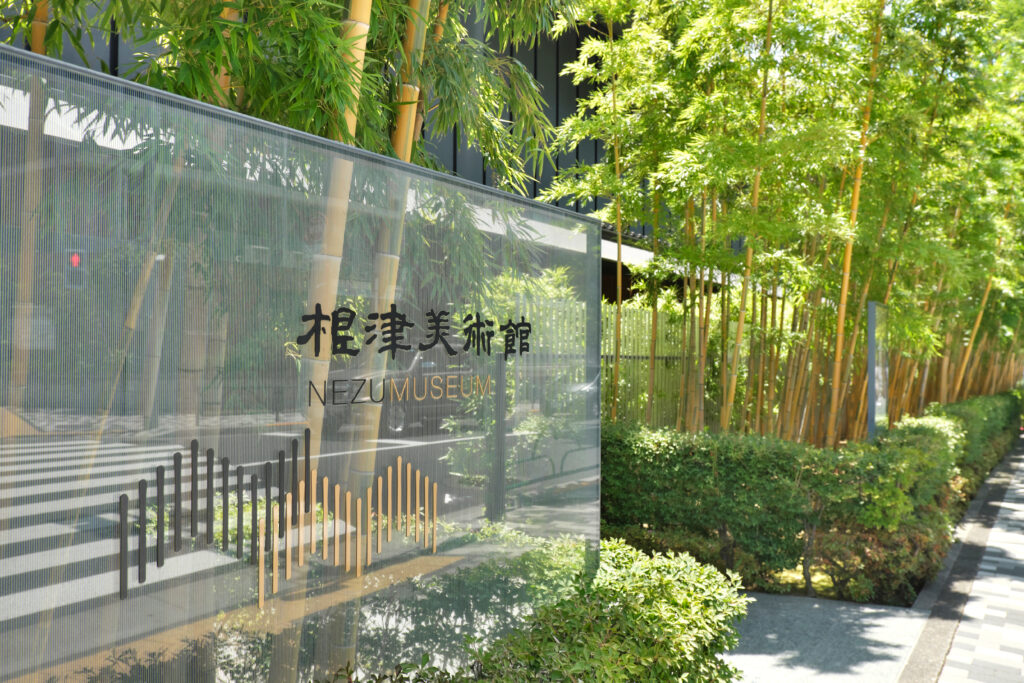
The Nezu Museum is a hidden gem in Tokyo, offering a serene escape from the bustling city with its impressive collection of pre-modern Japanese and East Asian art. Located in the upscale Aoyama district, the museum houses artifacts ranging from ancient calligraphy to samurai swords and Buddhist sculptures. The museum building, designed by the renowned architect Kengo Kuma, is a masterpiece in itself, with its minimalist design that seamlessly integrates with the surrounding nature. One of the museum’s highlights is its tranquil Japanese garden, which features stone paths, ponds, and traditional tea houses, creating a peaceful atmosphere where visitors can reflect on the beauty of nature and art. The museum’s rotating exhibits ensure that there is always something new to see, making it a favorite among art enthusiasts and those seeking a quiet retreat in the city.
16. Kabukicho, Shinjuku

Known as Tokyo’s “Sleepless Town,” Kabukicho is the city’s entertainment and nightlife district, located in the heart of Shinjuku. This neon-lit area is home to bars, clubs, restaurants, and the famous Robot Restaurant, where futuristic performances featuring robots, lasers, and dancers create an unforgettable show. Kabukicho is also the center of Tokyo’s red-light district, with adult entertainment venues, but it’s equally famous for its cinemas, arcades, and karaoke spots, making it a lively place to explore for tourists. By day, Kabukicho offers a more subdued atmosphere, with opportunities to explore Godzilla Road, which features a life-sized Godzilla head on top of a building, perfect for photo opportunities. The nearby Golden Gai is a network of narrow alleyways filled with tiny bars, each offering a unique atmosphere and an intimate experience of Tokyo’s nightlife culture. For those seeking excitement, Kabukicho is the place to be after dark.
17. Shibuya Crossing
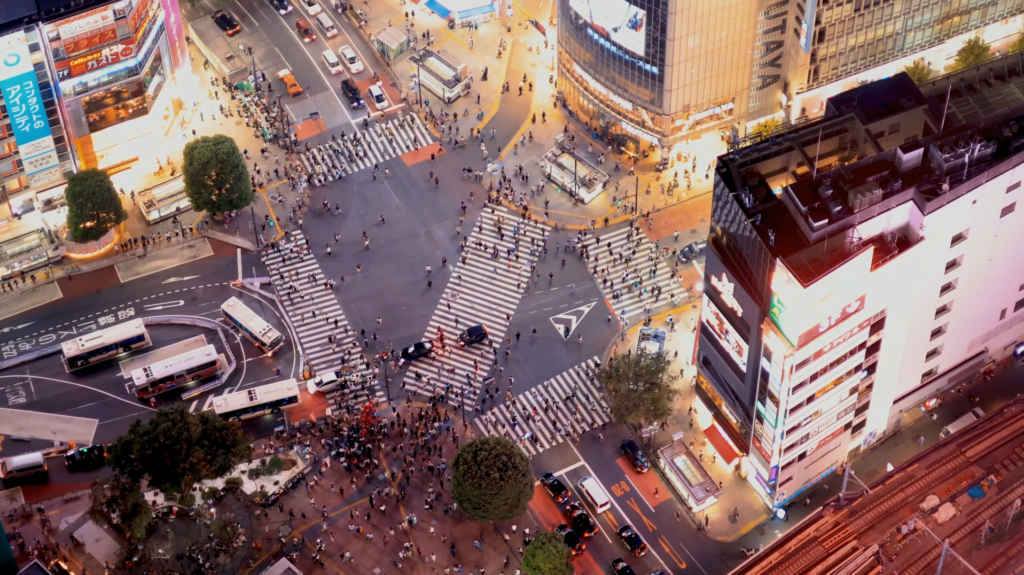
The world’s busiest pedestrian crossing, Shibuya Crossing, is more than just a simple intersection—it’s an iconic symbol of Tokyo’s fast-paced, dynamic energy. Located right outside Shibuya Station, this scramble crossing sees up to 3,000 people cross at once from multiple directions, all while surrounded by giant digital billboards, neon lights, and the chaotic vibe of modern Tokyo. It’s a must-see for any visitor, providing a unique and thrilling experience. A great way to take in the view of the crossing is from the second floor of the Shibuya Scramble Square or from the Starbucks that overlooks the crossing, allowing for perfect time-lapse photos or videos. The surrounding area is full of shopping, dining, and entertainment, making it one of the city’s most vibrant hubs.
Fun Fact: Shibuya Crossing has appeared in numerous films and television shows, such as Lost in Translation and Fast & Furious: Tokyo Drift, cementing its status as a global icon.
18. Tsukiji Outer Market
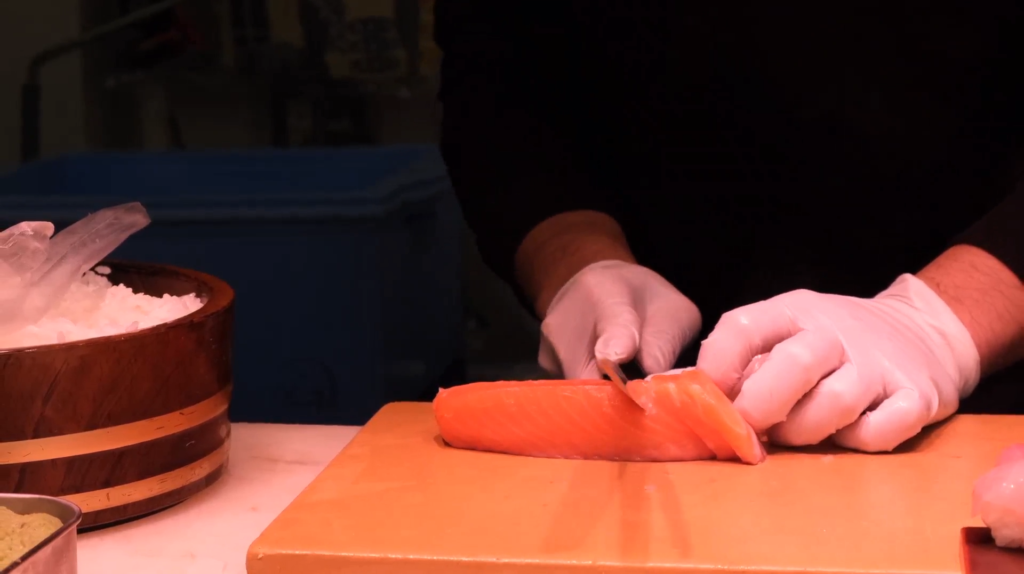
While the famous inner wholesale market has moved to Toyosu, the Tsukiji Outer Market remains a bustling and vibrant area filled with stalls and shops offering some of the freshest seafood in Tokyo. A visit here is perfect for food lovers who want to explore traditional Japanese street food, buy fresh produce, and savor some of the best sushi in the world. The market is famous for its grilled seafood skewers, tamagoyaki (Japanese omelet), fresh sashimi bowls, and melt-in-your-mouth otoro (fatty tuna). Many shops here continue the legacy of the old Tsukiji Fish Market, offering an authentic taste of Japanese culinary culture. You can also find kitchenware, knives, and unique food souvenirs to take home.
Pro Tip: Visit early in the morning for the freshest seafood and to avoid the crowds. Don’t miss out on trying freshly grilled unagi (eel) skewers or a sushi breakfast at one of the nearby restaurants!
19. Ueno Park and Zoo
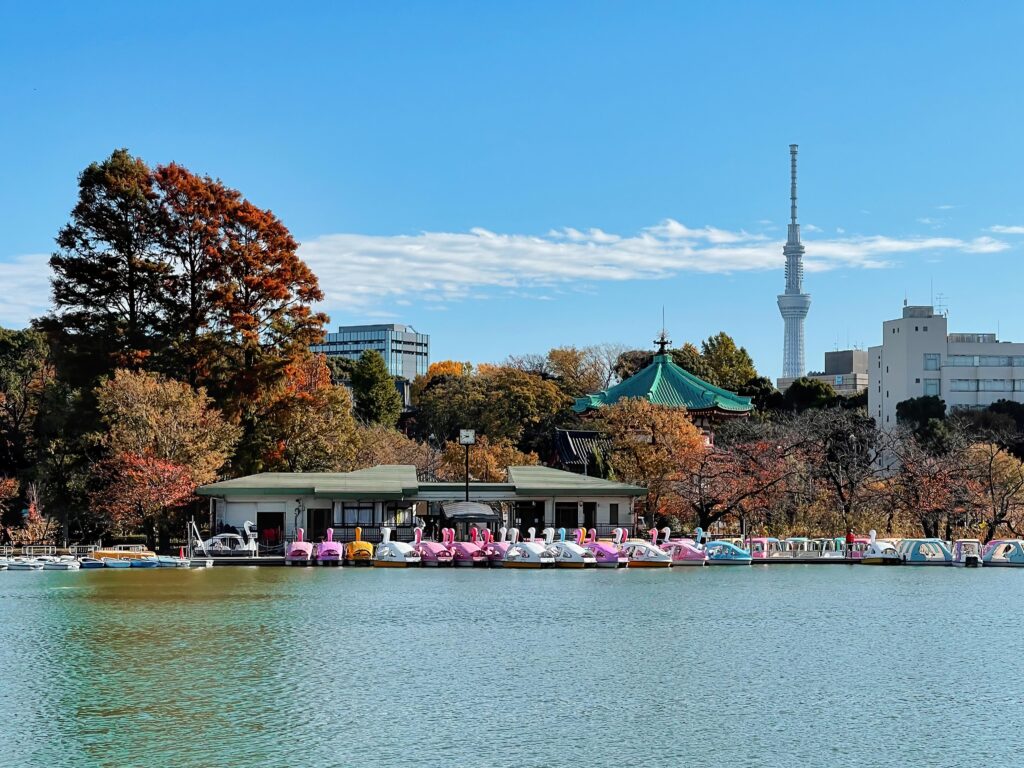
Ueno Park is one of Tokyo’s largest and most popular public parks, renowned for its stunning cherry blossoms in the spring. This sprawling green space is home to several of Tokyo’s top museums, including the Tokyo National Museum, the National Museum of Nature and Science, and the Ueno Zoo—Japan’s oldest zoo, where you can see the famous giant pandas. The park is a hub of cultural and historical significance, offering a mix of nature, art, and recreation. During cherry blossom season, Ueno Park becomes one of the best places in the city for hanami (flower viewing), where thousands of people gather for picnics under the blooming sakura trees. The park also features a beautiful lotus pond called Shinobazu Pond, which is perfect for a relaxing boat ride.
Fun Fact: The Ueno Zoo was founded in 1882 and is home to a wide range of animals, including tigers, gorillas, and its beloved pandas. If you’re lucky, you may catch a glimpse of the panda cubs playing!
20. Fuji Mountain
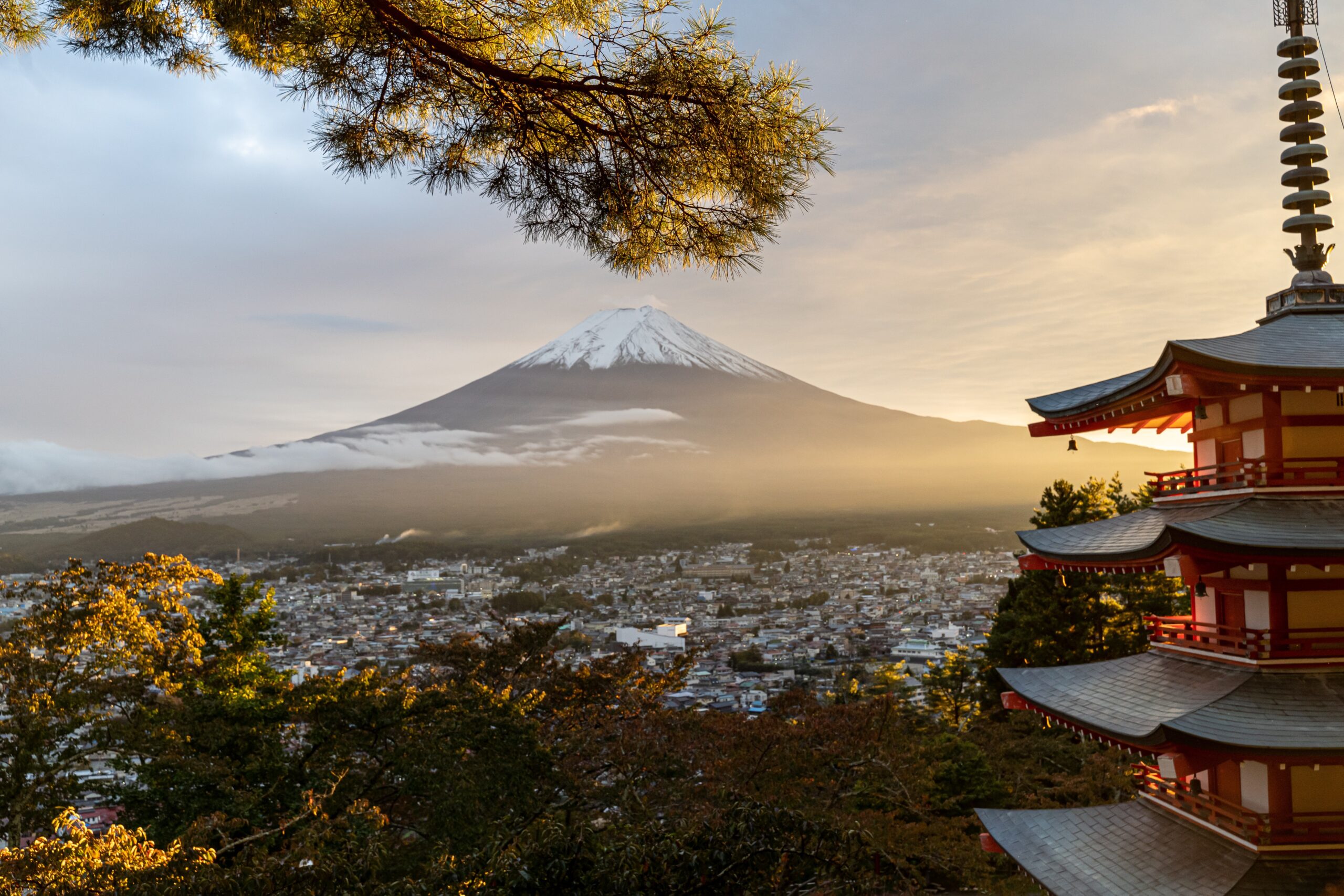
A trip to Mount Fuji is an unforgettable experience and a must for anyone visiting Tokyo who wants to connect with Japan’s natural beauty. Standing at 3,776 meters, Mount Fuji is Japan’s tallest mountain and one of the country’s most iconic symbols. While it’s located outside Tokyo, the mountain is easily accessible as a day trip from the city, with buses and trains offering direct routes to Fuji’s base. The best viewing spots are from Lake Kawaguchi, part of the Fuji Five Lakes, which offers stunning reflections of the mountain on clear days. If you’re feeling adventurous, you can hike to the summit during the official climbing season (July to early September). For those looking for a more relaxing experience, nearby onsen resorts (hot springs) offer views of the mountain while soaking in natural hot springs. The area also features the Fuji-Q Highland Amusement Park, which has thrilling roller coasters and anime-themed attractions, perfect for adrenaline junkies. Whether you’re hiking the mountain, exploring the surrounding lakes, or just enjoying a scenic day trip, Mount Fuji offers a breathtaking natural escape from Tokyo’s urban energy.
Pro Tip: Visit Mount Fuji in the early morning or late afternoon to catch the best light and avoid the fog that sometimes obscures the mountain during midday.
Extra Bonus 1: Shibuya Go Kart – Live Your Mario Kart Dreams!
If you’ve ever dreamed of zipping through the streets of Tokyo dressed as your favorite Mario Kart character, Shibuya Go Kart is the ultimate experience for you! This thrilling activity lets you dress up in costumes ranging from Mario, Luigi, Princess Peach, and even Pikachu, as you drive a go-kart through the real streets of Tokyo! You’ll get to see iconic locations like Shibuya Crossing, Tokyo Tower, and Rainbow Bridge, all while feeling like you’re in your very own real-life Mario Kart race.
Pro Tip: Be sure to bring an international driving permit, as it’s required to participate. And don’t forget to take lots of photos in your costume at famous landmarks!
Extra Bonus 2: TeamLab Planets – Dive Into a World of Immersive Digital Art!
For an experience that’s out of this world, TeamLab Planets offers an immersive adventure where you don’t just look at art—you become part of it! This interactive digital art museum in Toyosu lets you walk through water, explore infinite mirrored spaces, and interact with mesmerizing light displays that respond to your movements. One of the highlights is the Waterfall Room, where you’ll walk barefoot through knee-deep water while surrounded by a 360-degree projection of flowing light. You’ll feel like you’re floating through galaxies as flowers bloom and vanish at your touch, and fish swim around your feet before transforming into beautiful bursts of color.
Every room in TeamLab Planets is designed to engage your senses, making you feel fully immersed in the art around you. From walking through fields of floating orchids to getting lost in a room full of giant glowing spheres, each exhibit is a journey into a new dimension. It’s the perfect blend of nature, technology, and creativity that leaves a lasting impression. And the best part? It’s constantly evolving, with new installations being added regularly.
Pro Tip: Wear comfortable clothing and prepare to take off your shoes—the barefoot experience adds to the immersive feel! Be ready for some stunning photo ops, as every corner of TeamLab Planets is Insta-worthy!
Tokyo offers a perfect blend of the old and new, with attractions that cater to every kind of traveler. Whether you’re soaking in the breathtaking views from Tokyo Skytree, wandering through the neon-lit streets of Akihabara, or becoming part of the art at TeamLab Planets, Tokyo promises an unforgettable experience. With its cutting-edge innovations, rich history, and vibrant cultural scenes, Tokyo continues to be one of the most exciting cities in the world to explore. Pack your bags and get ready for the adventure of a lifetime!